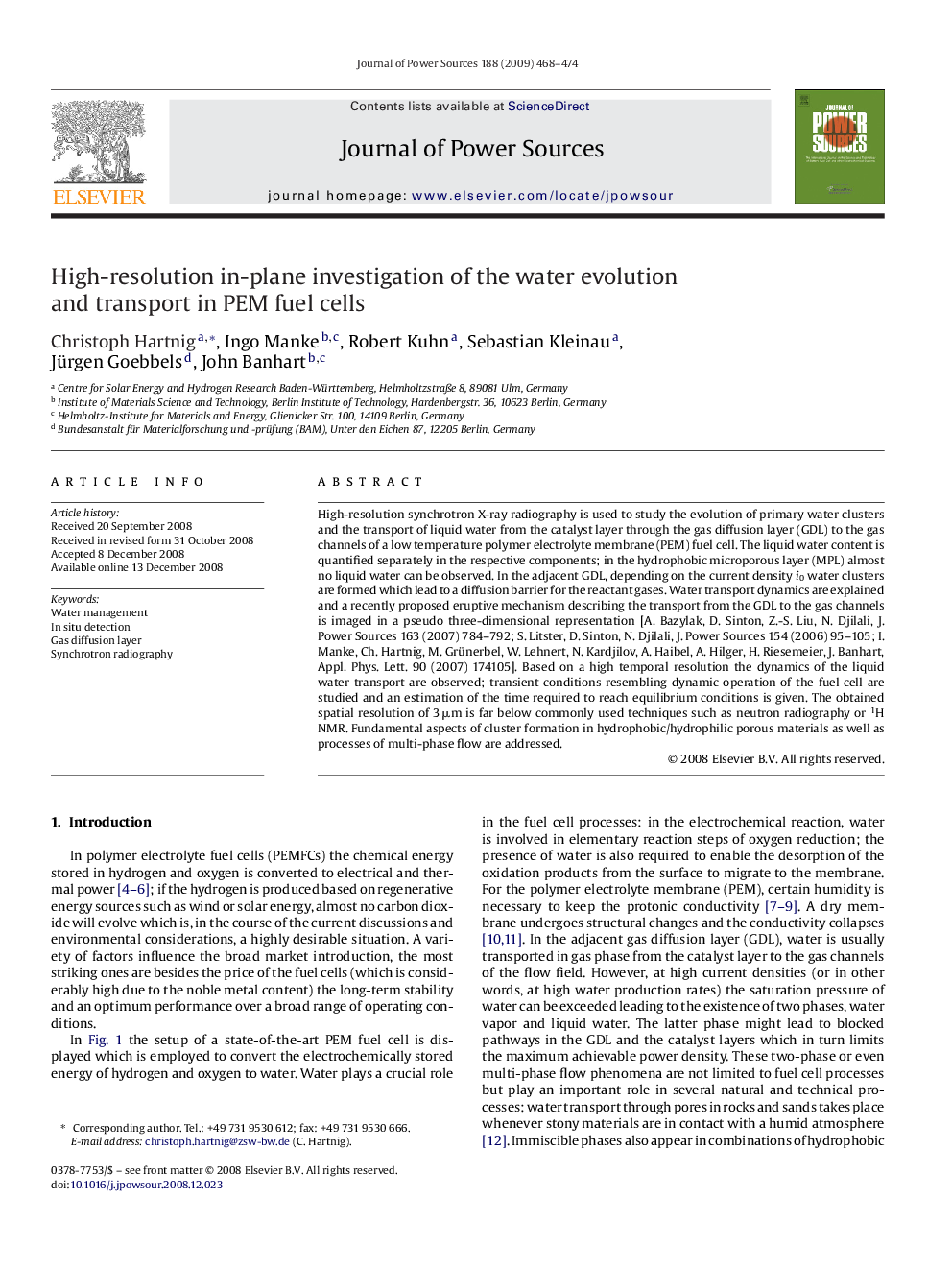| Article ID | Journal | Published Year | Pages | File Type |
|---|---|---|---|---|
| 1294246 | Journal of Power Sources | 2009 | 7 Pages |
High-resolution synchrotron X-ray radiography is used to study the evolution of primary water clusters and the transport of liquid water from the catalyst layer through the gas diffusion layer (GDL) to the gas channels of a low temperature polymer electrolyte membrane (PEM) fuel cell. The liquid water content is quantified separately in the respective components; in the hydrophobic microporous layer (MPL) almost no liquid water can be observed. In the adjacent GDL, depending on the current density i0 water clusters are formed which lead to a diffusion barrier for the reactant gases. Water transport dynamics are explained and a recently proposed eruptive mechanism describing the transport from the GDL to the gas channels is imaged in a pseudo three-dimensional representation [A. Bazylak, D. Sinton, Z.-S. Liu, N. Djilali, J. Power Sources 163 (2007) 784–792; S. Litster, D. Sinton, N. Djilali, J. Power Sources 154 (2006) 95–105; I. Manke, Ch. Hartnig, M. Grünerbel, W. Lehnert, N. Kardjilov, A. Haibel, A. Hilger, H. Riesemeier, J. Banhart, Appl. Phys. Lett. 90 (2007) 174105]. Based on a high temporal resolution the dynamics of the liquid water transport are observed; transient conditions resembling dynamic operation of the fuel cell are studied and an estimation of the time required to reach equilibrium conditions is given. The obtained spatial resolution of 3 μm is far below commonly used techniques such as neutron radiography or 1H NMR. Fundamental aspects of cluster formation in hydrophobic/hydrophilic porous materials as well as processes of multi-phase flow are addressed.
